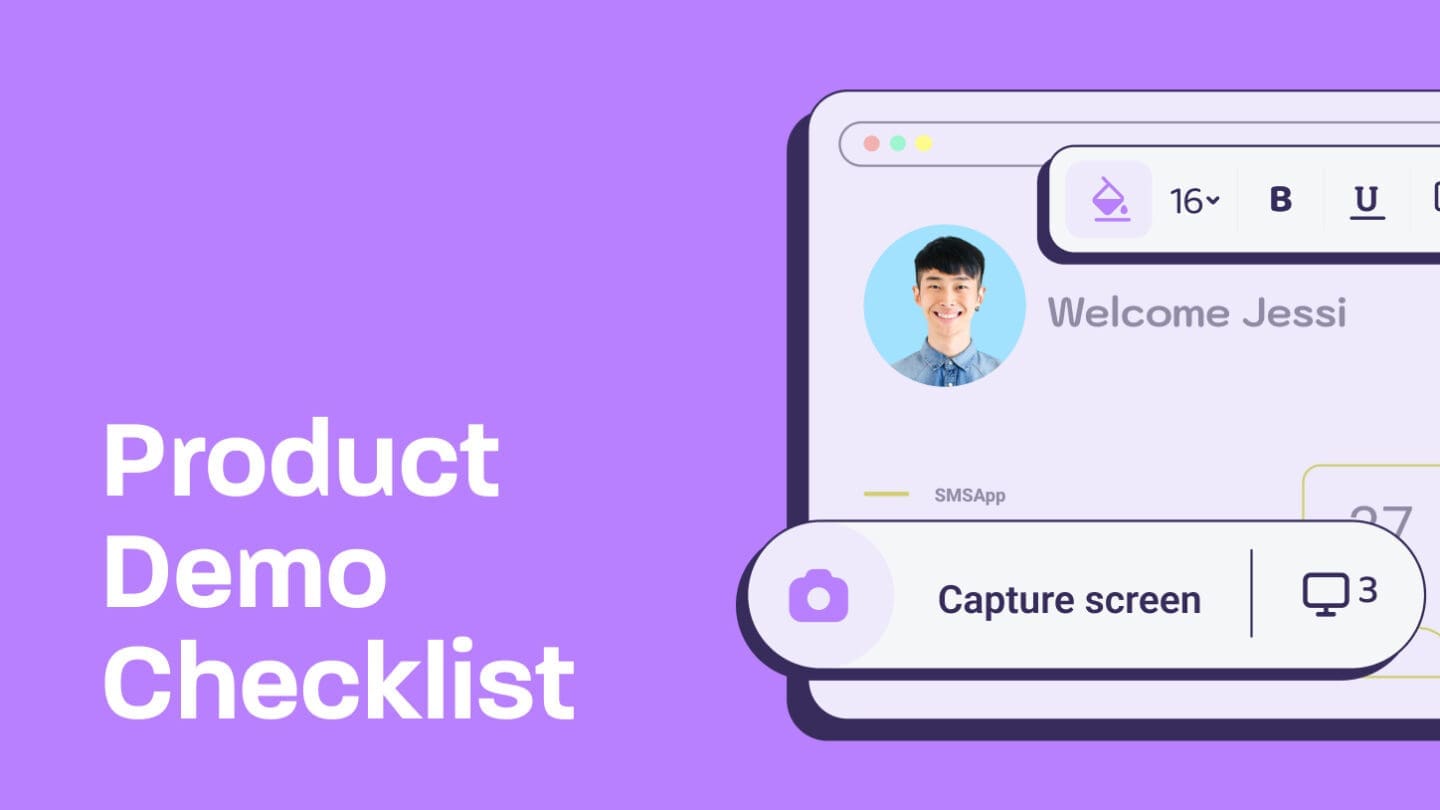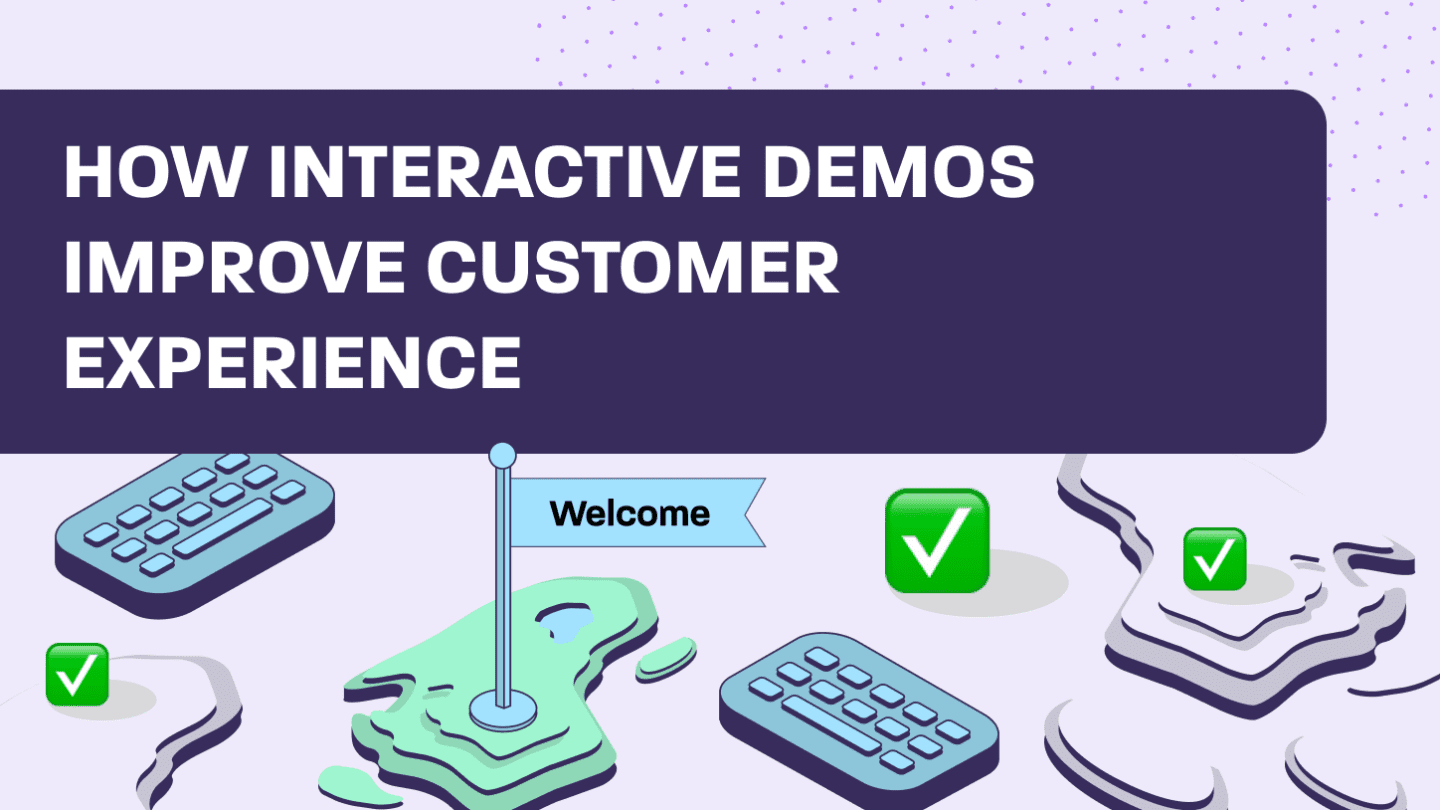Updated September 7, 2022.
Wait a second. Are you forgetting something?
We’ve all had this feeling, whether it was as we were leaving for a trip, planning an event, or booking a product demo with a high-profile prospect.
But instead of endlessly wracking your brain, wouldn’t it be nice if you had an organized checklist you can go through to make sure everything is prepared?
We thought so too. That’s why we created a product demo checklist for you to make sure you’re ready to face whatever challenges await you at this sales meeting.
What’s a product demo?
The SaaS product demo is one of the most crucial steps in the sales process. It’s the first time your prospect sees and understands if your product can actually keep the promise of your sales pitch.
As you know, today’s B2B prospects are savvier than ever before and are looking for a valuable, intuitive, and personalized sales process. The product demo is the perfect opportunity to check all these boxes and show your prospects that you can bring the exact value they seek while generating a genuine human connection.
You already know that Walnut’s codeless product demo platform enables you to create customized and interactive demos without coding, so we won’t brag again about our groundbreaking solution. That said, using the best demo platform around (damn, we couldn’t resist) isn’t enough to nail your demo calls.
That’s why we created this ULTIMATE product demo checklist just for you. And yes, it’s the ultimate checklist, which means that it’s really good.
Read on for the full product demo checklist or feel free to download it:

Step 1: Do your research
Take some time to properly qualify your B2B leads and make sure that they have the potential and capabilities to buy.
Wouldn’t it suck to join a call and for you both to realize that your product can’t solve their problems or that they don’t have the authority to make this purchase?
- Look the prospect up on LinkedIn or Zoominfo to learn about their professional background and position with the organization.
- Study the prospect’s product to understand what pain your solution can solve for them.
- Identify the decision-makers in the company and try to ensure that you’re talking to the right person.
- Pro tip: If you’re using Walnut, send a link to an interactive product demo via email ahead of the call so your prospect can play around with your product. Then, collect insights to understand which features are most valuable to them.
Step 2: Schedule a time
Once you’ve qualified your prospect, it’s time to send your prospects an email to schedule a demo.
When writing your email, make sure to keep it short, engaging, and friendly.
- Send them a link to a calendar to request a demo, including any relevant conferencing tools needed.
- Organize a brief product demo agenda with precise timing for each step and include it in the email so your prospects know what to expect from the demo call.
- Run a technical check to make sure all the elements you need for your demo are working, you are logged in to all the programs you need, and have a working video and microphone.
Step 3: Prep your product demo
Next, you’ll decide what product demo option is the best for you and prep your sales presentation outline.
When choosing your demo platform, make sure it allows you to personalize your demos, completely tell your product story, and offer an interactive sales experience.
- Use your demo agenda to write your demo script. Remember to keep the spotlight on the prospect’s specific pains and how your product solves them.
- If you’re creating an interactive demo with Walnut, make sure to personalize it with your prospect’s name, company logo, clients, etc.
- Prepare the outcome you’d like to communicate to your prospect. Focus on the value your prospect stands to gain, like how much time, workforce, software expense, and money they could save by using your product.
- Rehearse your objection handling by preparing for the areas your prospect is most likely to protest about: pricing, features, implementation time, etc.
Step 4: Present your product demo
It’s the big moment. Here are some software demo presentation tips to make sure you don’t mess it up:
- Create a human connection.
- Focus on pains and benefits—not on features.
- Keep an eye on your timing.
- Tell your prospect a story to engage emotions.
- Open a dialogue with your prospect and avoid droning on and on without a pause.
- Don’t forget to ask for feedback and questions every few minutes.
- Use simple language and keep the technical jargon for your colleagues.
- Define the next steps.
Step 5: Post-demo phase
- Write down a summary of the demo that includes the prospect’s questions, objections, most appreciated features, and other relevant information.
- Create a demo follow-up email after your product demo based on your summary and include a time suggestion for your next meeting.
- Bonus point: Send a link to the interactive product demo you presented, including guided annotations, and help your prospect spread the word among his organization.
- Share your demo insights with your company (sales engineers, post-sales, customer success) to ensure the knowledge collected is transparent and valuable to everyone!
The importance of using interactive demos
Keeping prospects engaged during a demo is crucial. So is quickly communicating your product’s value in a way that is personal and relevant for each prospect.
That’s why you need to arm yourselves with the right products to sell effectively.
Walnut’s interactive product demo software allows you to use personalized demos that showcase your product’s value and makes your sales pitch more compelling. The demos are interactive and can be shared with prospects in a live call or through an email for them to click through on their own. This way, they can really get a feel for how your product works and the value it brings.
The results is shorter sales cycles, happier prospects, and higher close rates.
Ready to create interactive demos that will blow your prospects’ minds? Click that “Get Started” button on the top of the screen.





